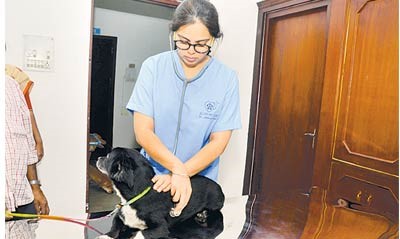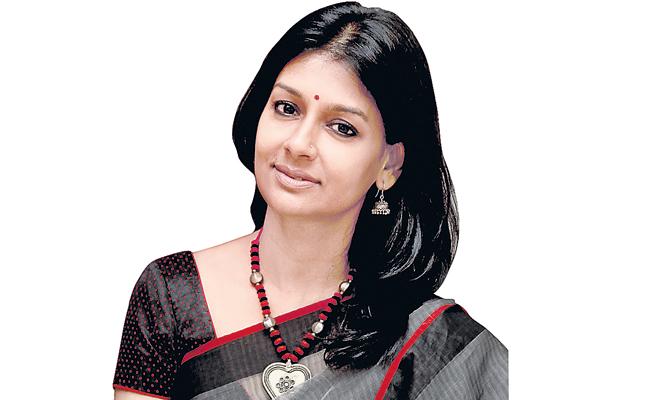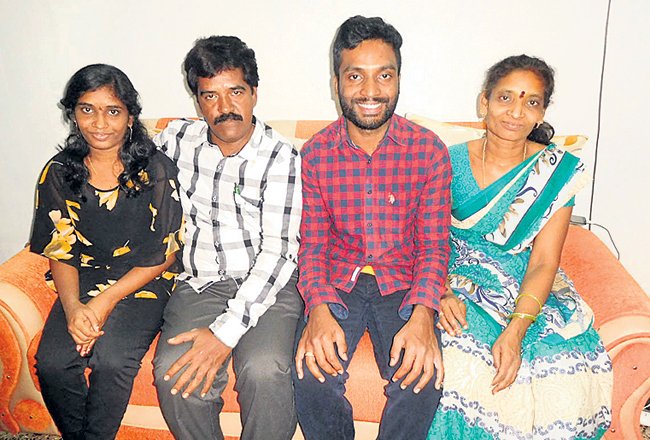No Results Found
The page you requested could not be found. Try refining your search, or use the navigation above to locate the post.
No Results Found
The page you requested could not be found. Try refining your search, or use the navigation above to locate the post.
Bollywood on the streets of Cairo
Sometimes there is more to travel than merely being photographed at iconic tourist hotspots
“You need a guide.” The teenager’s words sounded more like a prophecy than a question.
I had stopped to ask him for directions, given his vantage position outside the Coptic Cairo compound. Dressed casually in a striped jacket over jeans, he had been engaged in conversation with his companions — two older, turbaned men dressed in jellabiyas. A look of indecision that passed between my husband and me was enough to spring him into action. “Let’s go,” he said, promising to take us to all the notable sites in the heartland of Egypt’s indigenous Christian community.
Egypt is home to more than nine million Christians, the largest in West Asia, of which Coptic Christians form the majority. They follow the teachings of Saint Mark, who introduced Christianity to the country in the first century, during Roman Emperor Nero’s reign. The impact of the Egyptian revolution and subsequent unrest on tourism was evident by the lack of crowds. This also meant the undivided attention of our guide, as he deftly led us from one attraction to another.
We walked among the elaborate graves of the Greek Orthodox Cemetery and saw the insides of an empty grave with vaults for families and the dimly-lit crypt at St Sergius Church, where Mary and the infant Jesus are believed to have taken shelter to escape from King Herod.
We lifted the heavy velvet curtain in the shiny newer St George Church that revealed the ornate and bright silver altar and admired the courtyard’s colourful tiled biblical artwork and wooden roof, shaped like Noah’s Ark, in the 9th-Century Hanging Church. History in Egypt is tangible and often all-encompassing, an experience very different from exploring a museum.
Our guide moved around with a precision that is often typical of guides. He periodically relieved me of my camera, asking us to pose in places where he must have photographed countless travellers in the past.
An unexpected break in our planned sightseeing came in the form of a dozen teenage school girls on a field trip. Their carefree laughter preceded their arrival as they roamed the church grounds dressed in white and blue skirts and sweaters, with matching scarves neatly wrapped around their heads. They hollered at our guide in Arabic from a distance, presumably asking about us. His response, “Hindi,” which means Indian in Arabic, was enough to bring them rushing towards us.
“Kareena Kapoor, Shahid Kapoor”, Shah Rukh Khan, Amitabh Bachchan,” they exclaimed, amidst fast-paced Arabic, as if they had run into the actors themselves. Our guide initially attempted to translate, “They really love Bollywood movies. They watch all your movies.” But soon gave up, seeing their overwhelming excitement. He was relegated to the background, content with capturing our candid moments with the girls and their teacher, as I was enveloped in hugs and kisses.
A few minutes later, the girls started talking to the one who seemed the most outgoing of them, as if cajoling her to do something. She cleared her throat, and before we could realise what was happening, a familiar song filled the streets of Cairo, “Kasam ki kasam, hai kasam se. Humko pyaar hai, sirf tumse. Ab yeh pyaar na hoga, phir humse.”
Perhaps travel is not always about the adrenaline rush of the unfamiliar at every turn. Often, it is the unexpected warm embrace of familiarity that connects us to strangers in an unfamiliar land.
A peek into Italics Wine Clubs
Through its Italics Wine Clubs, the Il Dolce Vino Project gives Indian cities a peek into the culture and stories behind the beverage. Chennai is next in line
Mature peaches, apple and wild flowers on the nose lead to a fresh and balanced white wine, the fruity and floral notes coming together in a remarkably long finish. Russiz Superiore’s Pinot Bianco Collio DOC is an elegant white wine from Friuli in the northeast of Italy. It is made from 100% local Pinot Bianco grapes, grown in the hills of Collio by the Felluga family. This Friulian Pinot Bianco is delicious when paired with medium-aged cheese, San Daniele ham or white meat dishes.
Down the ages
The Felluga family, originally from Izola in modern-day Slovenia (visible from the family’s vineyards) moved to Friuli at the behest of patriarch Giovanni, who passed on his love for wine-making to son, Marco. Marco is now 91. A notable figure in Friulian oenology, Marco passed on the baton to his son Roberto, who is the face of the company now. Very much the doting father, Roberto introduces us to Ilaria, his beautiful daughter and next-in-line ambassador of the family’s 250 acres of vineyards.
We are in the carefully sculpted gardens of the mansion in the heart of the vineyards and delicate canapés set the stage for the evening, coupled with glasses of chilled white wine from the family’s cellars. Roberto’s favourite wine is the Collio Bianco Col Disore Russiz Superiore, a blend of Pinot Bianco, Friulano, Ribolla Gialla and Sauvignon Blanc.
He says, “Col Disore represents the uniqueness of our terroir, expressing great fruit, complexity, structure and minerality… all features recognisable of the region and the appellation.”
We are a group of 11, on the last leg of our wine-laced travels through Veneto and Friuli. We started at the 52nd edition of Vinitaly, the famous annual showcase of Italian wines, and are all part of the Il Dolce Vino Project, which has set up a network of Italics Wine Clubs (IWCs) in Indian cities to promote Italian wines and culture.
The project was launched in India by the Indo-Italian Chamber of Commerce to promote the enduring culture of Italian wines. The first course was conducted across two full days, followed by an examination for certification in Mumbai in 2017. Delhi, Kolkata, Bengaluru and Pune followed suit, and Chennai will in September.
India took the lead in the project, followed by Switzerland early this year. Thailand and Vietnam will join in soon.
“The wealth of Italian wines is in the diversity of its terroir: Italy boasts more than 450 autonomous wine grapes, which shape an innumerable variety of landscapes and traditions. The ambition of the project Il Dolce Vino is precisely to convey this wealth,” says Claudio Maffioletti, secretary general, Indo-Italian Chamber of Commerce.
The course delves into the culture, regions and stories behind Italian wines, and the appeal it holds. Italy is the world’s second-largest exporter of wine in terms of value, behind France. The country has 3,40,000 wine producers, a yearly output of 50 million hectolitres, and exports worth €5.5 billion.
“This course is the first-ever certification of Italian culture, wines and gastronomy. No wonder many WSET 3 (a Wine & Spirit Education Trust certification) holders have done the course already in Mumbai, Bengaluru and Kolkata,” says Subhash Arora, president, Indian Wine Academy. Subhash has been part of the Il Dolce Vino Project in India, conducting courses on wine education with Luca Bernardini.
From Silk Route to Beiyuanmen Street
If it is local flavour you are looking for, head to Beiyuanmen Street in Xi’an where you can watch live counters that will offer you some of the most delicious food
The Beiyuanmen Street is also called the Muslim Street in Xi’an, China, a historic quarter, where one is treated to food and souvenirs in a lively and colourful ambience. Located north of the Drum Tower, the street is not more than 500 meters long and paved with dark coloured stones. The architecture of the ancient buildings on both sides of the street, are modelled on the styles of both the Ming (1368-1644) and the Qing Dynasties (1644-1911). There are restaurants, stores and stalls on either side all of them owned by Muslims, hence its name.
The street has a long history. It has its origin from the time of the ancient Silk Road, dating back to 1000 years, when merchants and students from Arab countries and Persia used to come to Xi’an for business and studies. Some of these Arab merchants settled down in this area and married local women. The locals called them Hui and many of them are descendants of these Silk Road travellers.
It is an aromatic walk down the historical street with the smells of kebabs and other cooking delicacies. These include Rou Jia Mo (marinated beef or lamb in wheat bun), Yangrou Paomo (unleavened bread in mutton stew), fried rice with pickled Chinese cabbage and little capsicum, dumplings in hot and sour soup, lamb skewers, roast beef, biang biang noodles and steamed mutton or beef stuffed bun of Jiasan. There are stalls selling plenty of dried fruits and local sweets and candy, especially persimmon fruit pies and peanut sweets.
It is an educative stroll down the streets as live counters prepare and serve food right in front of you. Young men with large wooden mallets pound peanuts into a paste to make the famous peanut sweets and candy. Then there are men pulling and twisting dough so long to make noodles. Nearby a jackfruit is being deconstructed!
I watch the making of flavourful broth in huge vats with cuts of various meats and other mystery ingredients. And of course the grilling of meat and squid barbecues. A ‘must’ visit in Xi’an if you want to sample local cuisine.
No Results Found
The page you requested could not be found. Try refining your search, or use the navigation above to locate the post.

Irrfan Khan returns to Mumbai after undergoing cancer treatment
Actor Irrfan Khan was on Saturday spotted by eager paparazzi at the Mumbai airport, his first appearance since he returned to India after undergoing treatment for the neuroendocrine tumour in London. The 52-year-old actor had revealed last year in March that he was...
read more
PM Modi rubbishes critics of air strike, says 130 crore Indians are proof
Prime Minister Narendra Modi on Friday lashed out at those seeking clarity on the damage and casualties inflicted by Indian air strikes on a terror camp in Pakistan's Balakot. Saying that such people were "appeasing Pakistan", PM Modi said Islamabad itself had first...
read more
VP Naidu holds positive bilateral trade, investment talks on his visit to Costa Rica
Vice President M Venkaiah Naidu has met President of Costa Rica Carlos Alvarado Quesada and held "fruitful" discussions on a range of issues, including cross border terrorism, and new areas of collaboration that hold potential to boost the bilateral ties. Vice...
read more
Modi lays foundation stone for various Namami Gange projects in Kanpur
Prime Minister Narendra Modi on Friday in Kanpur inaugurated and laid the foundation stone for a slew of projects worth Rs.73.8 crore, including those for the Namami Gange project, aimed at cleaning and safeguarding the river Ganga. The ceremony was attended by Uttar...
read more
UK home secy sent Nirav’s extradition request to court: Sources
The United Kingdom's home secretary has recently referred India's request for extraditing bank-fraud accused Nirav Modi to a court for initiating legal proceedings against the diamantaire, official sources said Saturday. A British daily reported that Modi, accused in...
read more
New Pakistan should show concrete new action against terrorism: India
Pakistan will be judged not by words but on basis of the action it takes to dismantle terror infrastructure on its soil, India said Saturday, asserting that its non-military strike on the JeM terrorist training camp in Balakot achieved its desired objective. External...
read more
US Senator, former Air Force pilot, says she was raped by senior officer
US Senator Martha McSally, the first female combat pilot in the US Air Force, said on Wednesday she had been raped by a superior officer but did not report it because she blamed herself and did not trust the system. "The perpetrators abuse their position of power in...
read more
‘Gone full gangster’: US senators call out Saudi Crown Prince for misdeeds
Retired Army General John Abizaid, US President Donald Trump's nominee to be ambassador to Saudi Arabia, defended the US-Saudi relationship on Wednesday as lawmakers accused the kingdom of a litany of misdeeds and criticized its crown prince as going "full gangster."...
read more
Man urinating on another in carnival; Brazil President criticised for tweeting video
Brazilian President Jair Bolsonaro has sparked shock and outrage by tweeting a video showing one man urinating on another during his country's massive annual street carnival. "What is a golden shower?" Bolsonaro tweeted on Wednesday, a day after posting the video in...
read more
Inform about Lokpal’s selection committee next meet within 10 days: SC to Centre
The Supreme Court on Thursday asked the Attorney General K K Venugopal to inform within 10 days, the meeting dates for the selection committee which will appointment Lokpal members and the Chairperson. The Attorney General told to the bench that Lokpal Search...
read more
‘I’m alive, doing well’: Masood Azhar quashes death rumours in audio clip
Days after reports of his death, the terror outfit Jaish-e-Mohammed chief Masood Azhar has reportedly released an audio clip in which he rejected rumours of his death and warned the Pakistan government to stop persecuting mosques and true Muslims. In the 11-minute...
read more
Ayodhya land dispute case: SC order on mediation tomorrow
The Supreme Court on Friday will pronounce whether to send the Ram Janmabhoomi-Babri Masjid land dispute case for the court appointed and monitored mediation for a “permanent solution”.
read more








